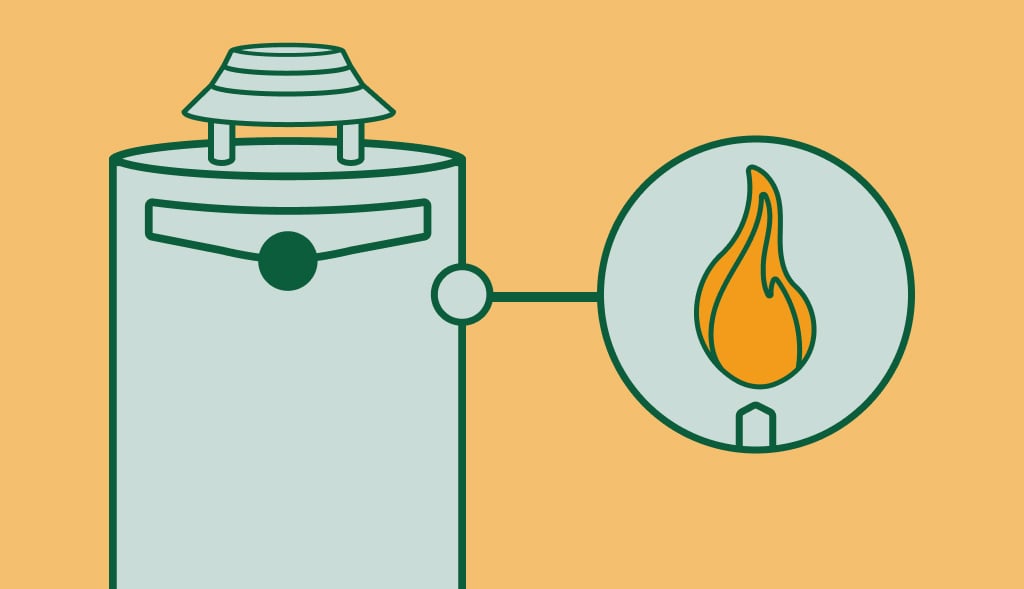How to Light a Pilot Light on Water Heater Efficiently

Discovering that your water heater’s pilot light isn’t functioning can be an inconvenience, especially when you’re looking forward to a warm shower. Fortunately, reigniting this light doesn’t necessitate a professional’s assistance.
This comprehensive guide will provide step-by-step instructions on ‘how to light a pilot water heater’. This guide will ensure that your home’s hot water heaters continue to function optimally.
Steps to Light Pilot on Your Water Heater
Preparing to Ignite the Water Heater
When your pilot light won’t stay lit, the first thing to do is to locate the access panel on your gas water heater. This panel typically conceals the control valve, the gas valve, and, most importantly, the pilot light. Some newer water heaters may have a simplified ignition system, but for many models, the procedure remains the same.
Turning the Knob to ‘Pilot’
Once the access panel is opened, the next step involves identifying the gas valve. This knob is a critical component of the ignition process.
It is often labelled with ‘pilot’, ‘on’, and ‘off’ settings. Begin by turning the knob to ‘pilot’. Note that during this process, there might be a slight smell of gas, but this is entirely normal.
Igniting the Pilot Light
The process of lighting the pilot involves the ‘igniting button’. This button, usually red, is often found next to the gas valve. The sequence of actions is relatively straightforward: press and hold the igniting button while continuing to hold down the pilot button.
Repeating the Process
If the pilot light isn’t visible after the first attempt, don’t be disheartened. You may need to repeat the process a few times, ensuring that you continue to hold down the pilot. Persistence is key here. Often, the pilot light will have stayed lit after a few attempts, signaling the successful completion of the task.
Turning the Knob to ‘On’
After the pilot light has been ignited, the knob needs to be slowly turned to the ‘on’ position. This action ensures that the gas flow continues, powering your water heater effectively. It’s critical to be cautious when performing this step – a rapid change could extinguish the light, forcing you to repeat the process.
When the Pilot Light Won’t Stay Lit
A key concern for many individuals is when the heater’s pilot light won’t stay lit. This problem could be due to several reasons, including a faulty control valve or issues with the thermocouple. If your pilot light refuses to stay lit despite multiple attempts, it might be time to call in a professional for help.
The pilot light often goes out because the injector is clogged.
The pilot light is responsible for the following:
- lights the water heater burner when heat is required
- provides heat to the thermocouple (without which the water heater trips and shuts down).
To sum up, these issues are mainly due to poor quality pilot flame:
- too small,
- too blue,
- fluctuating,
- ultimately not heating the thermocouple sufficiently.
Fist, the pilot flame needs to be checked. Just to make certain it is not clogged, that it is properly oriented (tightened), and that it is not pierced due to corrosion (rusted).
Why wouldn’t the boiler flame hold?
If the flame is absent, it’s probably because the thermocouple is no longer working properly. This safety device should be adjusted, or even replaced in the event of a fault.
Conclusion
In essence, the procedure on ‘how to light a pilot on water heater’ revolves around understanding the function of various components and executing steps in the right sequence.
The process of igniting the heater’s pilot light can be an empowering experience, enabling you to troubleshoot issues with your hot water heaters independently.
While newer water heaters often come with advanced features that make this process simpler, knowing how to manually light a water heater remains an essential skill for all homeowners.
In conclusion, the process of how to light pilot water heater may initially seem daunting but is actually quite straightforward. By carefully turning the gas, holding down the pilot, and using the igniting button, you can successfully light your water heater’s pilot light.
And remember, if your pilot light won’t stay lit despite the actions indicated above, please call a professional plumber.
Always remember to protect your investment and install a Corro-Protec powered anode to prevent corrosion, eliminate odours and reduce limescale.
DISCLAIMER: The information provided is for general DIY guidance on water heater maintenance and does not replace professional advice or service. Risks include electric shocks, burns, and property damage. Prioritize safety, follow manufacturer’s guidelines, and consult with professionals if unsure. Comply with local laws and obtain necessary permits. Use this information at your own risk; the provider assumes no liability for any injuries or damages. If in doubt, hire a professional.
Blog
The Importance of a Water Heater Pilot Light & Troubleshooting Tips
In the world of gas water heaters, few components are as vital and as underrated as the water heater pilot light. This small flame serves […]
Troubleshooting: Why Your Hot Water Heater Is Not Working
When you want a warm bath or shower but only get cold water, it can be really annoying. If your hot water heater isn’t working, […]

